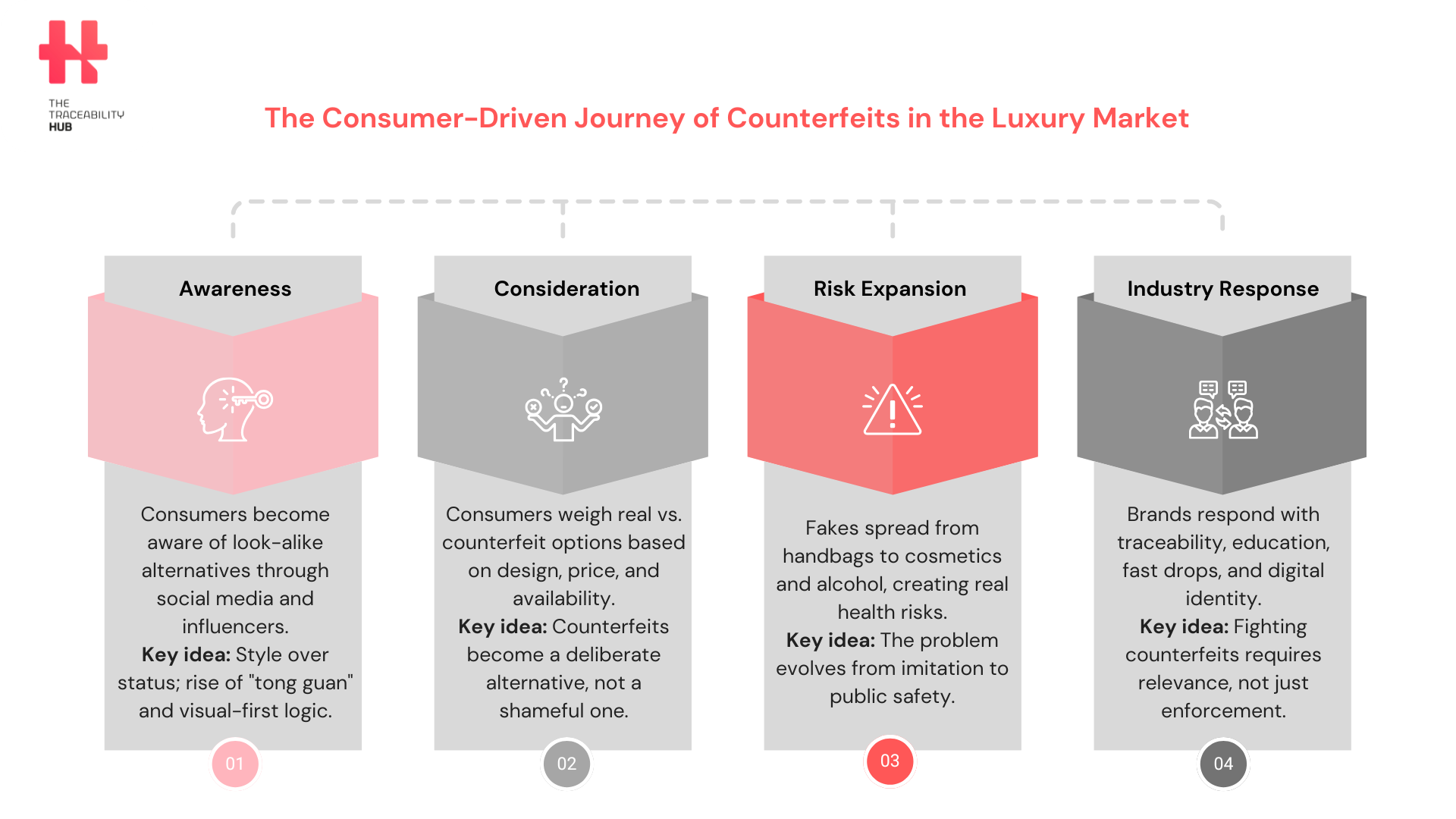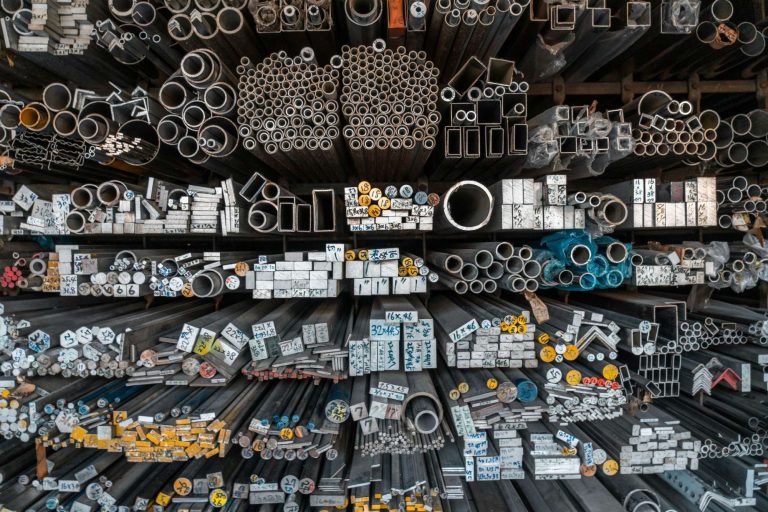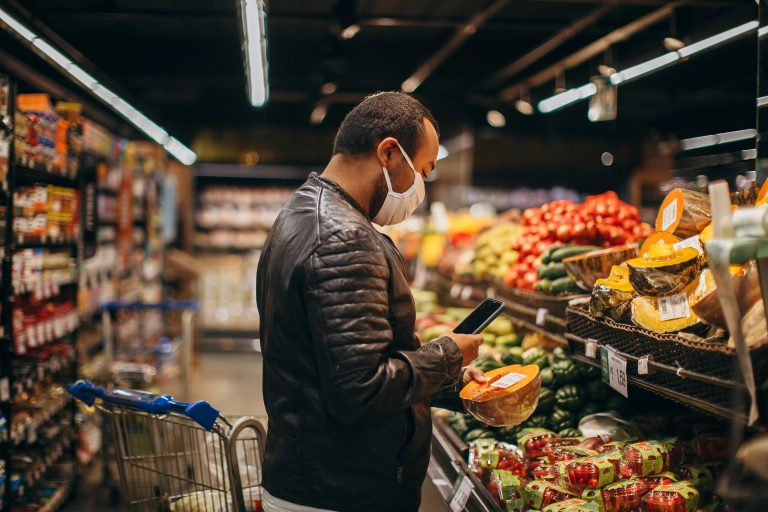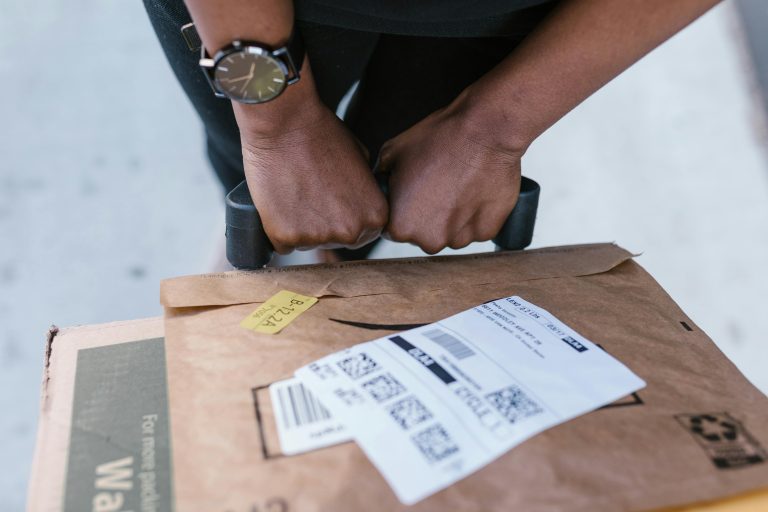Setting the Stage: A Shifting Global Counterfeit Goods Landscape
Counterfeits aren’t hiding in the shadows anymore. They’ve gone mainstream. What once lived on shady street corners now thrives across online marketplaces and even retail shelves. Today, the counterfeit trade is estimated by the WTO to be worth nearly $500 billion each year.
And it’s not just knockoff bags. The ripple effect spans across fashion, cosmetics, and even your favourite bottle of whiskey. It’s a reflection of changing cultural values and a redefined global economy. Luxury isn’t just about heritage or price tags anymore, it’s about what the consumer wants it to be.
A New Generation of Consumers: Looks Over Labels
The Consumer-Driven Journey of Counterfeits in the Luxury Market

The old rules of luxury are losing their grip. For Gen Z and Millennials, the pull of prestige and exclusivity just doesn’t hit the same. They’re chasing what’s visually striking and socially relevant.
Influencer posts, viral trends, and aesthetic feeds now shape buying decisions. Platforms like Instagram and TikTok reward the “look” more than the label. That’s why in places like China, products known as tong guan, the stylish look-alikes that stop short of trademark infringement are gaining huge popularity. Brands like “Rebecca Rossi” deliver the designer vibe without the designer price.
To many, buying a fake luxury good online isn’t it’s about pulling off a look. It’s a conscious, confident choice rooted in self-expression, not brand allegiance.
Counterfeits Go Mainstream: From Handbags to Risks of Buying Counterfeit Items
What started as a fashion trend is now spilling into riskier territory. Fake makeup, skincare, and alcohol are becoming alarmingly common and dangerous. These aren’t just inferior products. They can be harmful, sometimes seriously so.
Online, counterfeit cosmetics often contain harmful ingredients that can lead to burns, infections, or allergic reactions. In operations like Operation Opson: launched in 2011 is an Europol and Interpol joint operation targeting counterfeit food and beverages, because authorities have found substandard food and beverages laced with toxic substances.
This takes the issue from a style decision to a public health concern. It’s no longer about what looks real, it’s about what could actually hurt you.
Digital Platforms: Luxury’s Gateway—and Its Weak Link
The internet made luxury more accessible, but it also made fake luxury goods online easier to find and buy. Online platforms, especially in markets like China, have struggled to keep fakes off their virtual shelves. Platforms like Jumei and Jingdong have taken heat, and even Amazon hasn’t been immune.
As a result, trust is eroding. In China, only around 3% of luxury purchases happen online, a number that lags far behind markets like the U.S. For global brands, this scepticism makes them second-guess launching online stores in places where counterfeits dominate.
It’s a lose-lose: consumers miss out on authenticity and trust, and brands miss out on market potential.
The Economic Toll: Stunted Growth and Lost Trust
The damage from counterfeiting isn’t just about the sales brands lose, the OECD estimates losses of up to $250 billion annually. In Indonesia alone, counterfeit luxury goods could be draining $5.6 billion from the economy each year.
But it’s not just about money. Counterfeit products eat away at the foundation of trust between brands and consumers. They also stifle emerging designers and discourage creativity. Why innovate if your work is just going to be copied?
Over time, this dilutes the entire luxury ecosystem, replacing craftsmanship and originality with fast, cheap mimicry.
Counter-Strategies: Educating, Enforcing, Evolving
Luxury brands are hitting back with smarter, more creative strategies.
The CFDA’s “You Can’t Fake Fashion” campaign is a great example of raising consumer awareness. Events like Harper’s Bazaar’s anti-counterfeiting summits keep the conversation alive and public.
The Unreal Campaign, led by the “International Trademark Association” (with members across 181 countries worldwide), it is a global educational initiative dedicated to students (launched in 2012, it has directly reached more than 88,000 students), aimed at raising awareness about the importance of trademarks and the risks associated with counterfeiting and piracy.
Anti-counterfeit technology is stepping up too. With tools like blockchain, brands are creating transparent supply chains so customers can verify a product authentication luxury with a simple scan.
Meanwhile, some brands are rewriting the playbook, launching limited time drops, collaborating with influencers, and redefining luxury itself. It’s not about shutting people out with exclusivity anymore; it’s about inviting them in with creativity, sustainability, and relevance.
Redefining Luxury in the Age of Imitation
Maybe it’s time to rethink how we define what’s “real”. Counterfeit luxury market isn’t just a market problem; it’s a cultural signal. People are telling us something through their choices. Luxury doesn’t have to come from a boutique; it can come from how a product makes them feel.
As fashion analyst Hitha Prabhakar notes, we tend to only notice counterfeit fashion during scandals. But in the background, consumer demand for dupes and look-alikes continues to grow quietly and steadily.
For brands, this means one thing: staying relevant matters more than staying exclusive. In a world where imitation is everywhere, the future of luxury lies not in fighting fakes, but in offering originality, uniqueness, meaning, storytelling, and transparency that no counterfeit can replicate.
Read more: Grey Market Dynamics: How Diversion Impacts Luxury Shampoo Brands






